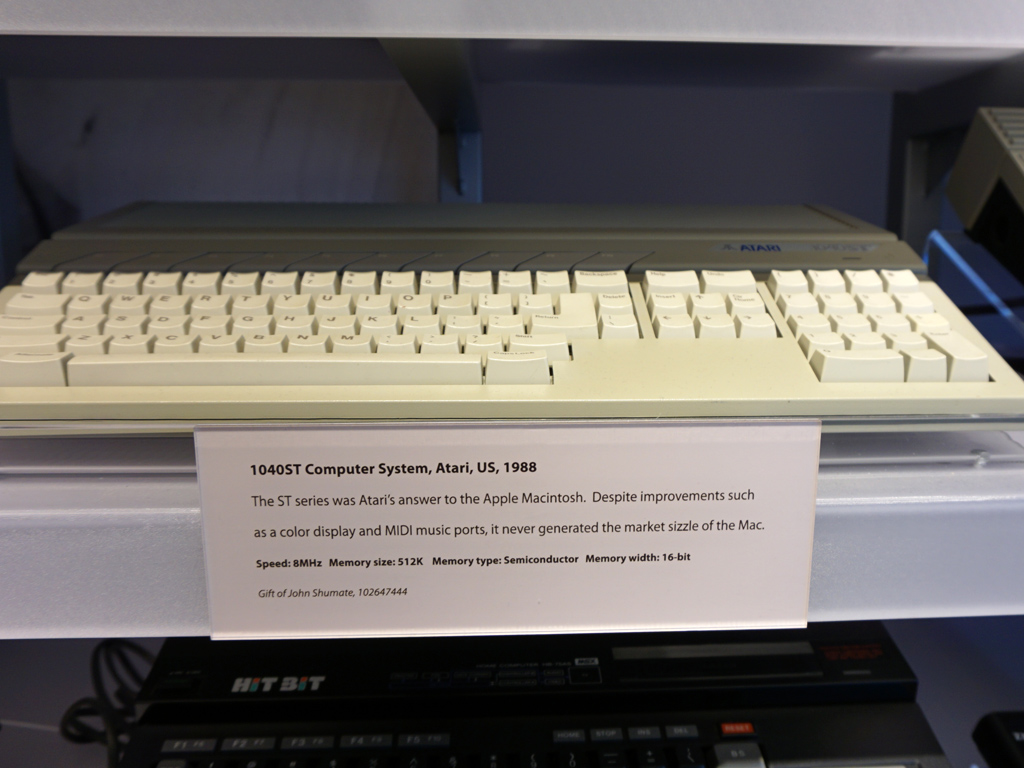Computer History: From The Antikythera Mechanism To The Modern Era
In this article, we shed light on the most important moments in computer history, acknowledging the people that have contributed to this evolution.
Atari 520ST And 1040ST(F)
During the golden home computer era I was lucky enough to have an Atari 1040STF along with a color monitor. Thanks to this computer I have many good memories of my early computing days. I sometimes miss the days when you didn't have to upgrade your system every so often in order to be able to play a new game or run a new application. For the record, my Atari 1040STF is still operational, 30 years after its first boot. Talk about reliability!
The Atari 520 and 1040ST belonged to the so-called 16-bit home computers category along with the Amiga 500. However, Atari is mostly known for its game consoles and its video arcade games. The company has a long tradition in the gaming arena, which started in 1972 with the release of the first video game, the famous Pong.
In the middle of the 1980s the Atari ST series made its debut, two months before Amiga 1000's release to the market. These two computers shared the same CPU, the powerful (for those days) Motorola 68000 CPU, which had a 16-bit wide external bus data and a 32-bit internal bus. This CPU was released in 1979 and was used by many famous (and not so famous) computers and game consoles, including the original Apple Macintosh, the Sega Genesis and Neo Geo consoles. It could reach 16 MHz speeds, however in the Atari ST models it was clocked at 8 MHz.
The naming scheme of Atari's ST series was derived from the number of bits of the 68000 CPU's external and internal buses (ST: Sixteen / Thirty-two). The 520ST model had 512KB of RAM while the 1040ST packed 1MB, an enormous amount of RAM for this time. In the storage section a 3-½" floppy drive was used, and the disks had up to 720KB of capacity. However, the most notable feature of the ST units was that they were the first mass produced computers equipped with a colored graphics interface environment (GUI). In addition, all STs had integrated MIDI ports for controlling music instruments, which made them highly popular among musicians.
When it came to graphics and sound capabilities the Atari ST was inferior to Amiga, but it was more affordable and its CPU was slightly faster. Amiga was mostly a gaming machine, or at least the people that bought it had this impression, while the Atari ST was destined for more "serious" work. This is why Atari had more support when it came to professional application packages including desktop publishing and CAD (Computer-Aided Design) apps.
We should note that during this period there was an epic controversy between Amiga and Atari ST users about which of the two was the best home computer. There was also a great conflict between Atari, which was bought by Jack Tramiel in 1984, and Commodore; this had to do with some chips that Amiga used. The dedicated graphics and sound chips that were used in the Amiga 500 were made by a small company, called Amiga Corp. The same company had received money from Atari in order to design and manufacture video and audio chips for Atari's computers. However, in the end the deal went south and Commodore was smart enough to grab the opportunity. The reason behind Amiga's late release was a lawsuit from Atari about Commodore's partnership with Amiga Corp, which allowed the Atari ST line to hit the market first, two months ahead of the Amiga 1000.
The most interesting part in the whole Atari-Amiga story is that the Atari ST line was made by Commodore's founder. Tramiel left the company in 1984 and bought the Consumer Division of Atari in the same year, while the Amiga line was designed by a company that was founded by Atari's ex-employees who kept close ties with Atari until Tramiel got hold of the company. We are talking about a huge mess here.
Get Tom's Hardware's best news and in-depth reviews, straight to your inbox.
Current page: Atari 520ST And 1040ST(F)
Prev Page Amstrad 464, 664 And 6128 Next Page ATARI TOS, (Mega) STE, TT And The Jaguar Gaming Console
Aris Mpitziopoulos is a contributing editor at Tom's Hardware, covering PSUs.


